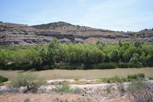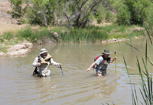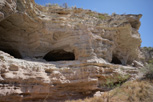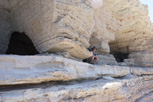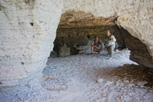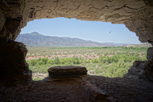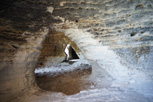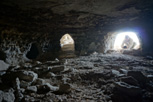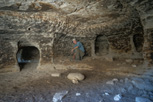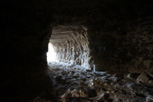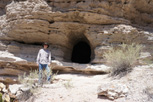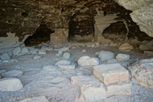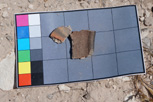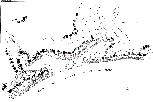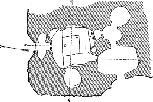Mindeleff Cavates is quite a treat for those interested in Arizona Archaeology. A cavate (pronounced as if conjoining the two words "cave" and "ate") is a man-made cave. The term was coined by the 19th century explorer John Wesley Powel to differentiate this type of dwelling from the far more common cliff dwelling, which is a structure constructed inside a natural cave or hollow.
These cavates are named for the visionary archaeologist Cosmos Mindleff who, with his wife Marion, conducted the first detailed archaeological surveys of over 50 major sites in the Verde Valley circa 1891. Mindeleff's report, published in 1896 by the US Bureau of Ethnology, is considered decades ahead of its time for its detail and accuracy, and for his holistic approach to analyzing land use and settlement patterns. This was at a time when many archaeologists were little more than artifact collectors, with minimal regard for site preservation or documenting the context of their finds.
Mindeleff Cavates consists of about 89 separate dwellings and a total of about 343 rooms, hand carved out of a layer of soft sandstone sandwiched between two harder layers of rock along the east banks of the Verde River south of Camp Verde. At its peak, it would have housed at least 250 people, and possibly significantly more. The following photos provide a taste of what this site has to offer:
A typical dwelling is characterized by a small opening in the cliff face, perhaps three feet wide by four feet high, that opens up into a round or oblong main room typically fifteen feet across and tall enough to stand up in. The main room will generally have one or more small alcoves for sleeping or storage, and may also have tunnels leading to adjacent dwellings or to rooms deeper into the cliff. The floors are generally flat, in some cases having been built up with rocks and mud plaster, and frequently contain depressions that may have been used for cooking fires. There is some evidence that masonry walls were once used to partition large rooms, and to protect some of the larger entrances. However most of these walls have been destroyed by prehistoric and historic looters, and any portable artifacts have long since disappeared.
The following images are taken from Mindeleff's 1896 report to the US Bureau of Ethnology:

"The remarkable but little known Mindeleff Cavates"
Article from the "Verde Independent," by Steve Ayers (3/6/2012)

"The Mindeleff Cavate Site, Verde Valley, Arizona"
Article from "GLYPHS: The Monthly Newsletter of the Arizona Archaeological and Historical Society," by Susan D. Hall, Desert Archaeology, Inc. March 2005. (page 7)

"Aboriginal Remains in the Verde Valley, Arizona"
Cosmos Mindeleff's original paper, published in the 13th Annual report of the Bureau of Ethnology, 1891-1892. (Description of the Cavate Lodge Group starts on page 217.)

